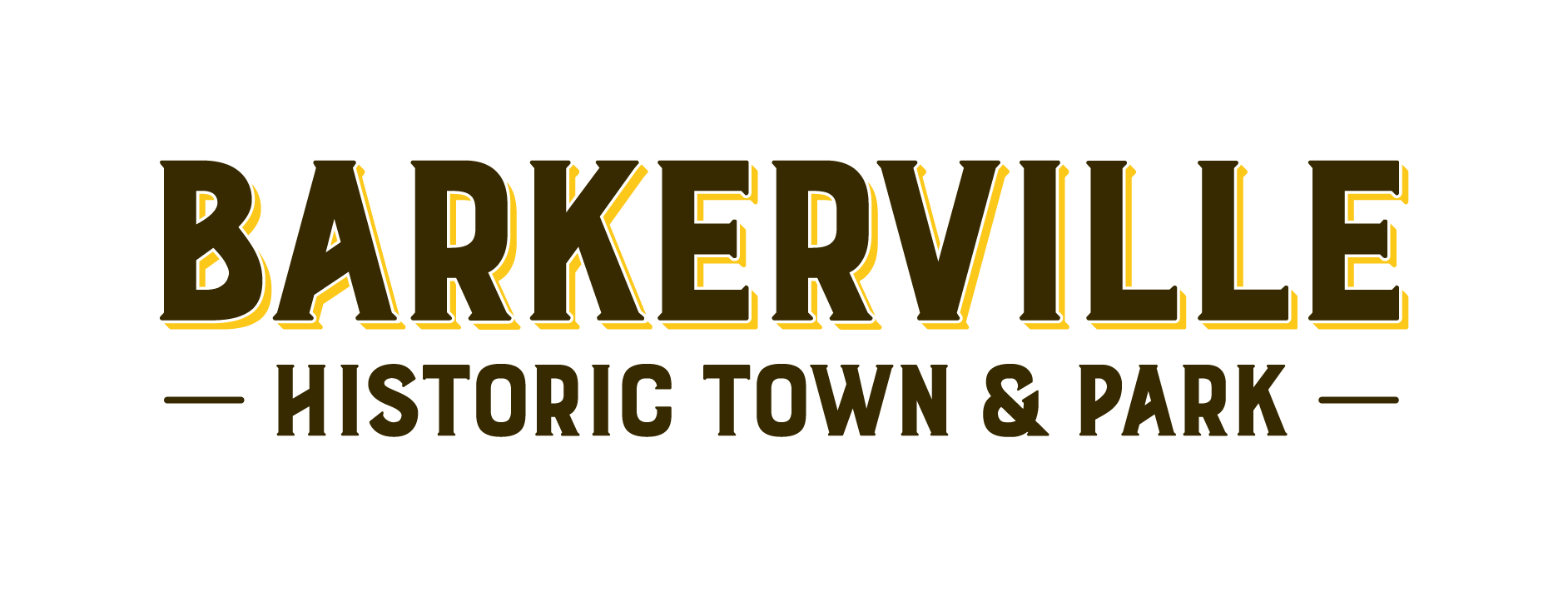Our Story
Dahooja, Weyt-kp, Hadih! Barkerville is located on the traditional, ancestral, and unceded territories of the Lhtako Dene Nation and Secwépemc Peoples. Several nations have history and territory in the area, including Lhtako Dene, Nazko, Lhoosk’uz, Ulkatcho, ʔEsdilagh, Xatśūll, Simpcw, and Lheidli T’enneh. Evidence of early Indigenous settlement in the region dates back over 10,000 years.
British Columbia’s central interior has been profoundly shaped by gold thanks to a simple, working-class English prospector named William ‘Billy’ Barker who, in 1862, spearheaded a twenty-year, multi-billion dollar industrial revolution that literally helped build a Province.
As with many early miners, Barker’s story began in the American gold fields in the mid-1800s where people from all over the world travelled to seek their fortune. By the mid-1850s, gold finds were slowing and rumours began to surface of ‘easy gold’ on the Fraser River. Barker had worked without much success in California and so he, along with thousands of men, headed north to the British territory that is now British Columbia. In addition to the north-bound travellers, groups later called “The Overlanders” trekked across Canada from the East, and hordes of people were arriving by boat from all over the world to travel up the Gold Trail from the coast towards to Fraser River to find fortune.
Eventually, prospectors made their way to the hills that surround Barkerville and one of the first finds was by William “Dutch Bill” Dietz, for whom Williams Creek (which flows through Barkerville) is named. A small town began to spring up around the area, optimistically named Richfield.
Barker eventually ended up in Richfield, trying his hand at a few spots around William’s Creek where his lack of success continued. As time passed, he decided to mine further down the creek, in the area below Richfield. Many people questioned his decision, saying he would find no gold there. But Barker persisted and endured, and was finally proven right on August 17, 1862, when he and his crew ‘struck the lead,’ at a depth of 52 feet.
As a result, Barkerville became a cornerstone in the development of Canada and the founding of British Columbia. It is the site of the first-ever Dominion Day celebration and is the town that supplies the Cariboo gold rush.
By the mid-1880s, Chinese residents made up half of the Cariboo region’s population. Nowhere is this more evident than Barkerville’s Chinatown: home to the oldest Chee Kung Tong building in Canada and the most extensive collection of Chinese buildings, photographs, and artifacts in North America.
Gold mining is a boom and bust industry but in the Cariboo Goldfields, mining has never stopped. The region experienced a gold rush rebirth in the 20th century and the neighbouring town of Wells sprang up to house over 4,000 residents.
Today, the extraordinary town of Barkerville (named in Billy’s honour) still stands as testament to BC’s golden beginnings. With a unique streetscape of 125+ heritage buildings, authentic displays, satellite museums, restaurants, shops and accommodations there is still so much to explore. Declared a National Historic Site of Canada in 1924 and a Provincial Heritage Property in 1958, Barkerville is now the largest living-history museum in western North America, where exciting seasonal events and fun-filled daily activities await.
Truth, Reconciliation, and Decolonization at Barkerville
Barkerville is overcoming the legacy of a painful past. Not long ago, a lack of understanding of Indigenous history and little desire to accept responsibility to address Indigenous concerns meant there was a reluctance to acknowledge the harms done by the gold rush and the process of colonization.
Today, we recognize that museums, archives, and historic sites are tied to a legacy of colonial power structures and discriminatory methodologies that discredit and erase the voices of many people. We accept that past practices bear improving, and we proudly commit to re-examining our values, acknowledging the harms of the past and moving forward along the path to reconciliation. We are making a concerted effort to critically examine our own history, collections, exhibitions, and programs to ensure that everyone feels welcome, safe, and included.
We are, in particular, committed to answering the Truth and Reconciliation Commission of Canada’s Calls to Action for Museums, Archives, and Galleries and following the United Nations Declaration on the Rights on Indigenous Peoples. In this work, our actions are guided by the Draft Principles that Guide the Province of British Columbia’s Relationship with Indigenous Peoples.
Through relationship building with Indigenous nations locally and regionally, and working collaboratively with Indigenous knowledge keepers, we are working to incorporate the 10 Principles of Truth and Reconciliation and the rich history and knowledge of Indigenous peoples at every level of what we do. We acknowledge that these relationships must be based on respect, recognition and exercise of Aboriginal title and rights and to the reconciliation of Aboriginal and Crown titles and jurisdictions. This ongoing process requires listening, learning, and acknowledging the true history of Canada and this region, especially the lasting and traumatic legacy of residential schools.
It is our responsibility to care for the land, resources, knowledge, and traditions of this place and all that that entails. We are guided through this important work by the voices of First Peoples and the land itself. We have much to learn, and much work to do.
